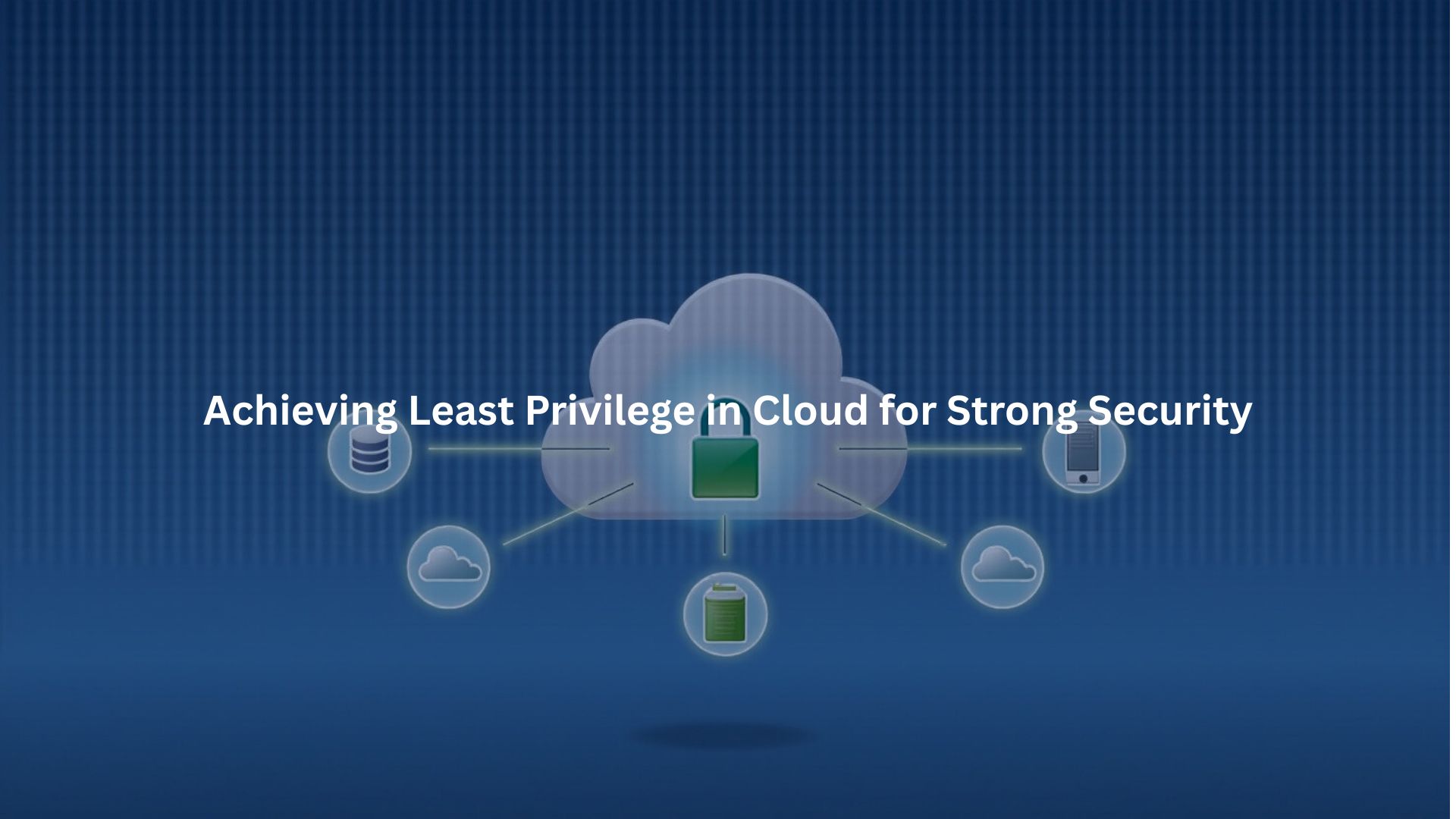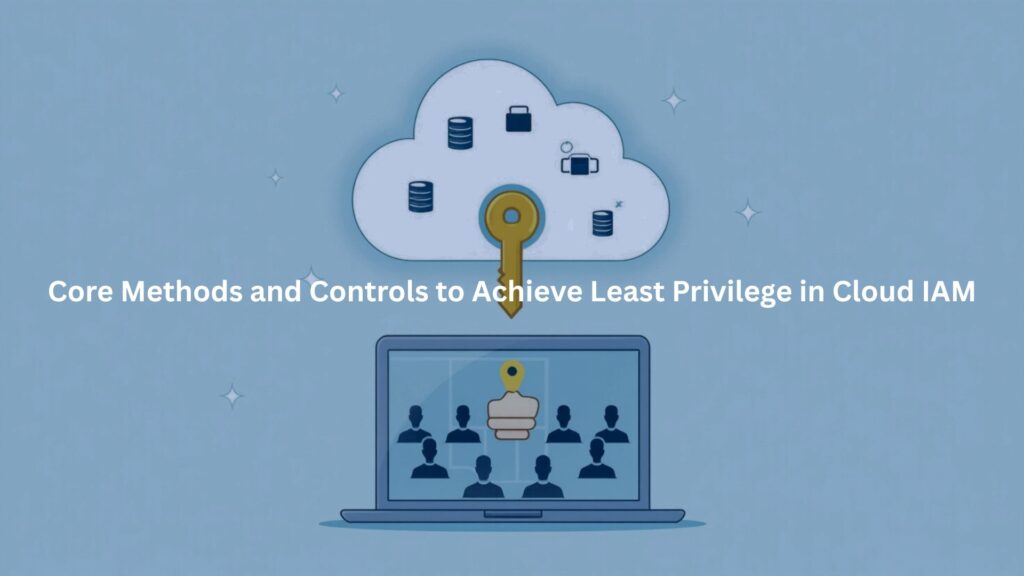
Cloud permissions pile up like old spare keys – under doormats, in flowerpots, stuffed who-knows-where around the house. We’ve watched this story repeat itself in our bootcamp sessions, tech companies making the same mistakes month after month.
Sure, dev teams start with good intentions, but those access rights spread faster than backyard weeds. The security folks coming through our training get it now: sweep those user accounts clean, cut back what’s not needed. Beats lying awake at night hoping nothing breaks in.
Key Takeaways
- Keep access rights tight, give people just what they need to do their jobs, nothing extra.
- Smart teams use role-based controls, temporary passes when needed, and multi-factor auth.
- Regular cleanup matters more than fancy tools.
Understanding Least Privilege as a Security Principle in Cloud Environments
Cloud security looks nothing like it did five years ago. These days, the whole “understanding least privilege” thing isn’t just security talk, it’s about keeping access tight, giving teams just enough to do their jobs.
Running these bootcamp sessions month after month, we keep seeing companies trip up on this basic idea, leaving their systems about as secure as hiding house keys under a welcome mat.
Permission problems sneak up quick and quiet. Last quarter’s tech client audit turned up more than 50 ghost accounts still floating around their system. Dead project logins, ex-employee credentials, temporary passes that never got killed – all sitting there like open invitations. That’s the kind of stuff that makes hackers’ lives easier, and fixing it before it bites has become pretty much our daily mission.
Smart access control pays off in ways that matter. Tight permissions mean fewer ways for bad actors to get in, and any breaches stay boxed up small. Those ISO 27001 and HIPAA folks definitely notice when permissions match job duties. The teams coming through our program get their hands dirty with real cases – seeing how proper access management helps everything run smoother, especially when roles shift or companies hit growth spurts.
Core Methods and Controls to Achieve Least Privilege in Cloud IAM

A stylized illustration showing a cloud filled with icons representing files, apps, and databases.
Setting up the least privilege takes more than checking a few boxes. After teaching hundreds of developers, our bootcamp’s found some battle-tested approaches that actually work in the real world.
Role-Based Access Control (RBAC) Implementation
Random permissions don’t work – period. Smart teams start by mapping out clear roles like “Database Admin” or “Cloud Developer” before adding specific access rights. Last month’s audit at one of our client sites went smooth as butter because they’d organized everything by job function.[1] Saves a ton of explaining when someone asks “who can touch what?”
Policy-Based Permissions and Fine-Grained Controls
Those “*” wildcards in permission settings? They’re basically disaster waiting to happen. Our bootcamp drills this home quick – replace those catch-all permissions with precise limits. Give read-only access to specific folders instead of handing over keys to entire storage buckets. We’ve seen the best results when teams combine big-picture boundaries (keeping prod and dev separate) with detailed resource controls.
Temporary and Just-in-Time (JIT) Access Mechanisms
Permanent access rights make about as much sense as leaving your front door wide open year-round. Through dozens of projects, temporary permissions proved way safer – teams get access when they need it, lose it when they don’t. Modern cloud tools handle this pretty well, especially for stuff like giving devs quick admin rights during deployments.
Multi-Factor Authentication (MFA) Enforcement for High-Privilege Actions
Basic security moves often pack the biggest punch. Sure, MFA might seem obvious, but it’s stopped more attacks than we can count. Even if someone’s login gets compromised, they’re stuck without that second check. The companies who build this habit early always end up thanking us – usually right after they dodge their first close call.
Maintaining Least Privilege Through Continuous Review, Automation, and Monitoring
Nobody likes hearing it, but the least privilege needs constant babysitting. Running these bootcamps showed us how teams treat it like a set-and-forget deal – that’s usually when things fall apart. Even our own platform serves as a real-world lab, teaching hard lessons about keeping permissions in check.
Regular Permission Audits and Revocation of Unused Permissions
Here’s what actually works in the cleanup process:
- Monthly hunts for accounts dead longer than 90 days
- Service account checkups every quarter
- Auto-flags when access rights sit unused
- Notes on every permission tweak
- Regular cleanup days with dev teams
Surprises pop up in every audit. Just last quarter we dug up 37 IAM roles nobody’d touched since some proof-of-concept stuff back in ’22. Amazing how this junk piles up when nobody’s watching.
Leveraging Cloud Infrastructure Entitlement Management (CIEM) Tools
These CIEM tools changed everything about tracking cloud access. Think of them like security cameras for permissions – showing exactly who’s doing what across AWS, Azure, and GCP. Students get their hands dirty with these tools during training, catching weird setups before they turn into problems.
What we’ve seen work best:
- Live tracking of who’s using what
- Smart suggestions for better policies
- Permission tracking across platforms
- Risk scores when certain access combos look sketchy
- Hooks into existing security stuff
Infrastructure as Code (IaC) Integration for Access Control Consistency
Putting access controls into code might feel weird at first, but it’s changed how we handle permissions. Instead of clicking through menus, teams store their access rules in version control, just like any other code. When someone needs new permissions, they make a pull request, no more secret accounts or forgotten access. It also makes security checks way easier since every change is tracked and written down automatically.
Organizational Strategies and Challenges in Achieving Least Privilege in Cloud
Credit: Tenable
Enforcing least privilege isn’t just about tech. It also means making company choices and changing how people work together.
Defining Clear Boundaries and Separation of Duties
Segregating environments, like production vs development, minimizes risks. Assigning distinct roles and responsibilities reduces insider threats. We had to clarify these boundaries to avoid overlapping privileges.
Addressing Visibility and Policy Alignment Challenges
One challenge we faced was lack of centralized visibility into permissions across accounts. Admins sometimes requested broad access to avoid delays, but this clashed with security goals. Balancing ease of use with strict controls requires ongoing dialogue.[2]
Adapting Policies to Dynamic Cloud and Development Environments
Cloud environments change fast. Policies need to keep up with new resources and agile workflows. We’ve learned that checking our rules often and letting smart tools do the boring jobs keeps least privilege strong, without slowing the team down.
Compliance and Audit Readiness Through Least Privilege Enforcement
Least privilege isn’t just a standalone idea, it’s important to understand the difference between least privilege and zero trust to align policies more effectively with modern security models. Showing compliance with regulations becomes smoother when policies are well enforced and documented.
Conclusion
After six years running these bootcamps, the path to solid cloud security looks pretty clear. Map out who needs what access, keep permissions tight, and don’t skip the basic stuff like MFA. But here’s the real deal – you can’t just set it up and walk away. Regular checks matter, automation helps, and your security rules need to move as fast as your cloud setup changes. Nothing fancy about it – just steady attention to who’s got the keys.
Join our next bootcamp and put these steps into action before the gaps find you.
FAQ
How does cloud least privilege work with identity and access management to protect data?
Cloud least privilege is about giving people only the cloud permissions they truly need. When paired with identity and access management, it means every account is tied to a verified person or service, and cloud access control is set with care. The goal is to reduce risk by using the least privilege model so one account can’t accidentally or maliciously reach too much. Good setups mix role-based access control with strong authentication so it’s harder for attackers to move around.
Why is role-based access control important for cloud security and cloud IAM?
Role-based access control in cloud IAM helps keep cloud security tight by defining cloud user roles clearly. Instead of giving broad cloud admin privileges, you match permissions to tasks, lowering the chance of privilege creep. RBAC cloud setups also make it easier to run an access review cloud process regularly, spot unused accounts, and ensure cloud account boundaries are respected. It’s a way to make the least privileged access idea practical without slowing down real work.
How can zero trust cloud improve cloud security posture alongside least privilege access?
Zero trust cloud means no one gets access without proving they belong each time. It strengthens cloud security posture by layering on continuous checks, even for accounts that already passed identity and access management rules. Together with least privilege access, it blocks attackers from exploiting old logins or crossing cloud account boundaries. Adding cloud monitoring, multi-factor authentication cloud, and cloud access anomalies detection keeps defenses active and ready to catch trouble before it grows.
What’s the best way to stop privilege creep in cloud environments?
Privilege creep happens when accounts slowly gain too many cloud access rights over time. To stop it, combine entitlement management, access review cloud steps, and automated permission management. This trims cloud user privilege and cuts down on forgotten cloud admin privileges. You can also set temporary access cloud rules or use just-in-time access so permissions vanish after the job’s done. These methods keep cloud secure access lean without hurting productivity.
How do cloud security best practices handle cloud permission auditing and cloud access monitoring?
Cloud security best practices call for frequent cloud permission auditing to see who has what access. Paired with cloud access monitoring, you can track changes and spot misuse early. Cloud audit logs tell the story of every access, while cloud service policies and cloud policy enforcement make sure rules stick. Adding privilege escalation prevention tools and following cloud security compliance requirements helps keep your least privilege model from drifting over time.
References
- https://www.researchgate.net/publication/390692021_Role-Based_Access_Control_RBAC_in_Modern_Cloud_Security_Governance_An_In-depth_Analysis
- https://www.sysdig.com/blog/identity-access-management-difficult-cloud

